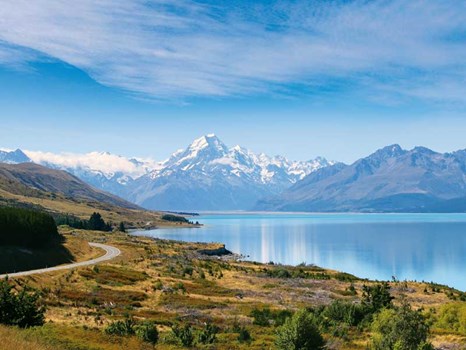 |
Lake Pukaki is a vibrant blue on a sunny day |
With autumn upon us and winter just around the corner, the days can be a bit dreary. Maybe it’s time to start planning next summer’s adventures? There’s one place that really needs to be on your bucket list and that is Aoraki Mt Cook.
A journey of grandeur
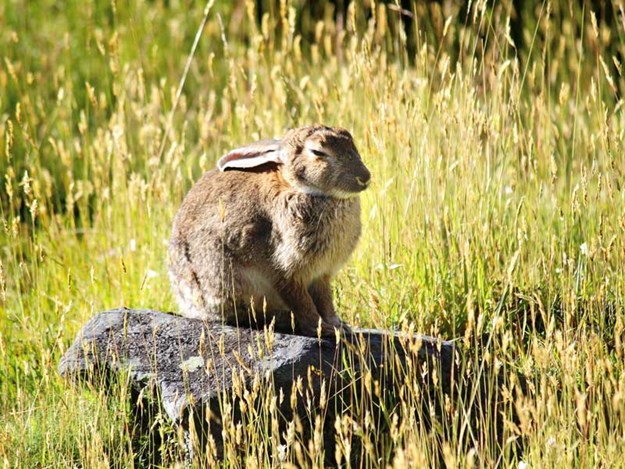 |
Even the rabbits pause to enjoy the fine weather |
The magic of Aoraki Mt Cook began for us well before reaching the national park boundary. We caught glimpses of New Zealand’s tallest mountain from a fair distance away, and turning off the main highway to start the sidle alongside Lake Pukaki quickly brought us into breathtaking territory.
The day was fine and the bright blue sky reflected in the glacier lake, which shone a brilliant aquamarine colour. At the far end of the lake, Mt Cook and Mt Tasman rose high above the glacial plains.
With spectacular views all around, we were excited to reach a lookout point, along with the 200 other tourists, who were as enamoured with the scenery as we were.
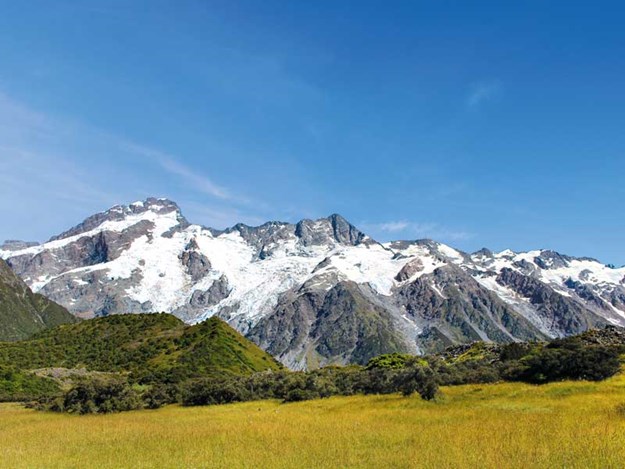 |
Glorious views in every direction |
The day was fine and the bright blue sky reflected in the glacier lake, which shone a brilliant aquamarine colour. At the far end of the lake, Mt Cook and Mt Tasman rose high above the glacial plains.
With spectacular views all around, we were excited to reach a lookout point, along with the 200 other tourists, who were as enamoured with the scenery as we were.
Campsite mania
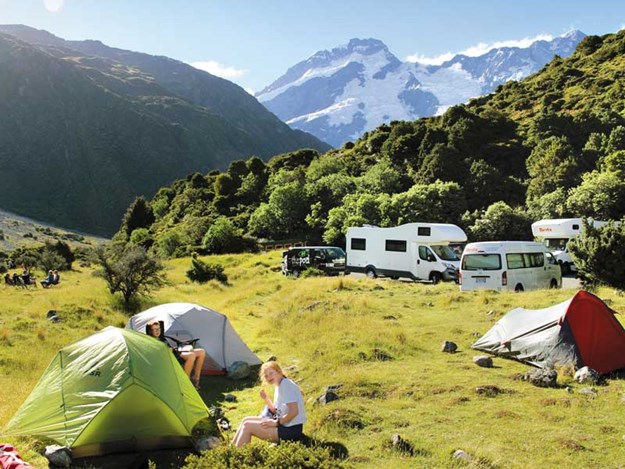 |
A campsite with a view; Mt Sefton |
Being the height of summer and with the crowds in mind, we hit the road to reach the conservation campsite just outside Mt Cook Village.
White Horse Hill Campsite sits below glacier-covered Mt Sefton and, according to the DOC website, caters for up to 60 camping groups.By the time we got there, campervans were lined up closely side by side and we were lucky to find a park.
It was tenting for us this time round and we were pleased to have brought our smaller tramping tents as the amount of smooth ground available close to the car was limited. But we found ourselves a possie and happily settled in.
Freda's rock
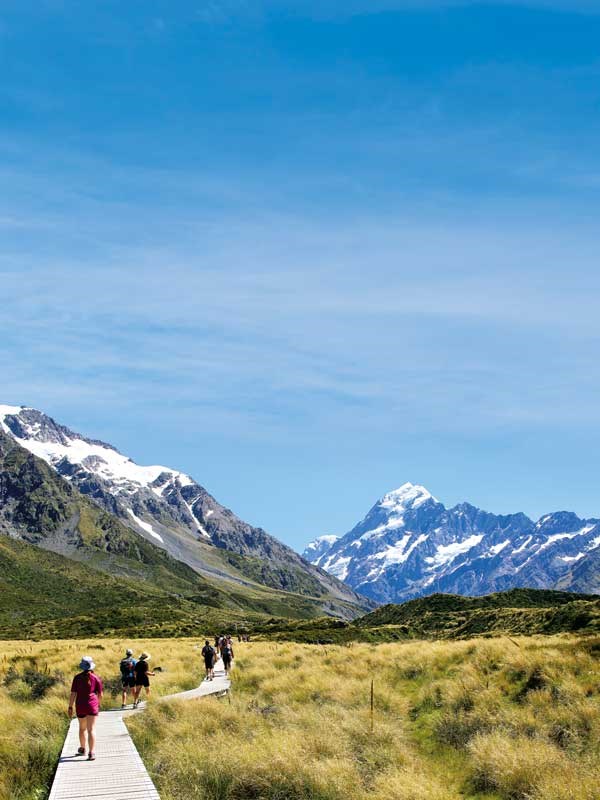 |
Boardwalks protect fragile alpine wetlands |
Top of our list of walks to do was the Hooker Valley Track. About 10km return, this walk is on an easy, well-maintained track that takes you to the Hooker Lake near the base of Mt Cook. The weather was stunning once again, and after breakfast we set off.
Within two minutes of setting out, we veered off the track to check out Freda’s Rock. There we learned about the first woman to climb Mt Cook in 1910, Freda Du Faur.The children also grabbed the opportunity to clamber up the giant boulder, their own personal challenge.
crowd pleaser
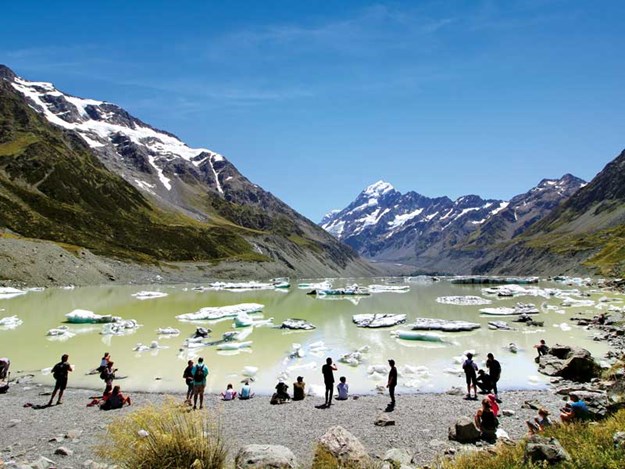 |
Icebergs give Lake Hooker and otherworldly appearance |
Within another 15 minutes we reached Lake Mueller, a small glacial lake formed by the runoff from the Mueller Glacier that flows down the valley beside Mt Sefton.
The water was a rock grey colour, and from its outlet became a fast-flowing river on its journey to join the Tasman River and eventually Lake Pukaki.The lookout was fairly crowded so we stopped only briefly.
This is one of the most popular tracks in the national park so we were joined by hundreds of other walkers on such a sunny day. It was great to see so many people out enjoying our beautiful country.
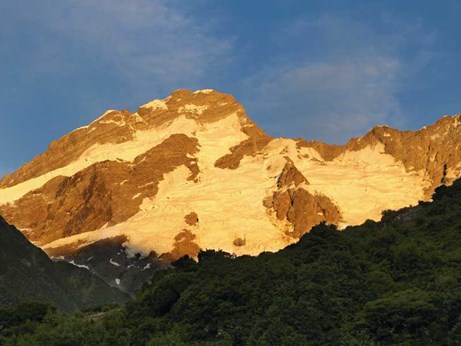 |
Sunset on Mt Sefton glaciers |
Bloom time
With three fast-flowing river crossings needed to get up the valley, DOC have built three huge and sturdy swing bridges.While looking down through the gaps in the planks is a little unnerving, they were far too solid to invoke any real fear in me, which was a bonus as I’m not great with heights.
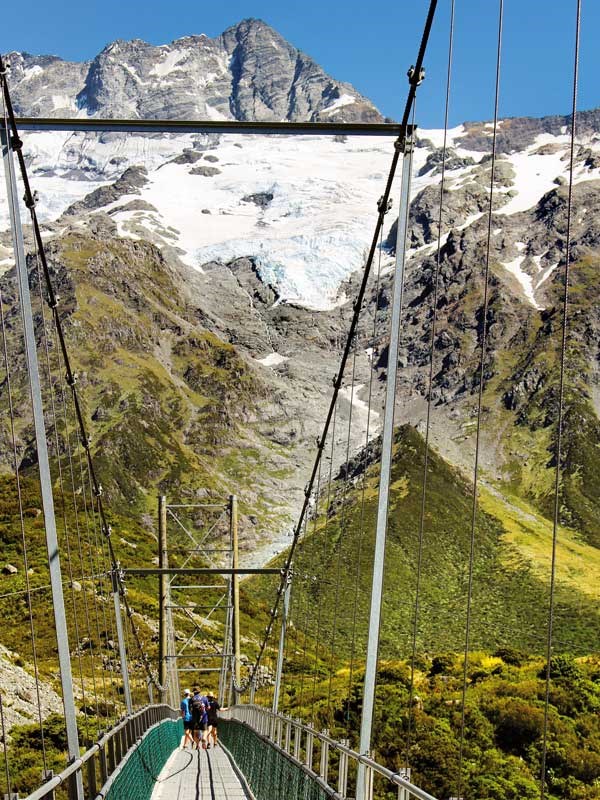 |
Swing bridges cross the raging rivers |
They were certainly a popular photo stop for walkers too! Many alpine flowers were in bloom, the most obvious the Celmisia, the mountain daisy.
I was hoping to see the famous Mt Cook buttercup (once known as the Mt Cook lily), but while the giant green leaves were easy to spot, we were too late to see the flowers, which bloom in late spring and early summer. Being the world’s largest buttercup, it may warrant a return trip just to check it out.
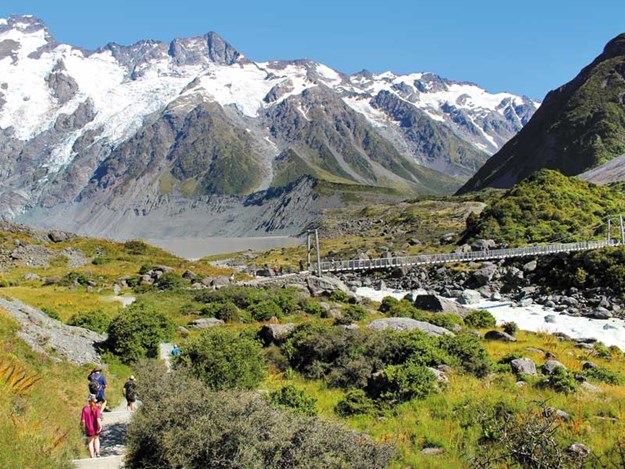 |
The first swing bridge, with Lake Mueller in the background |
A beach with bergs
Reaching Lake Hooker took our breath away. From a lookout point we gazed down upon a lake filled with icebergs of different shapes and sizes.
The beach below was crowded with walkers in various states of dress, some even in the water up to their waists to get the perfect iceberg shot.
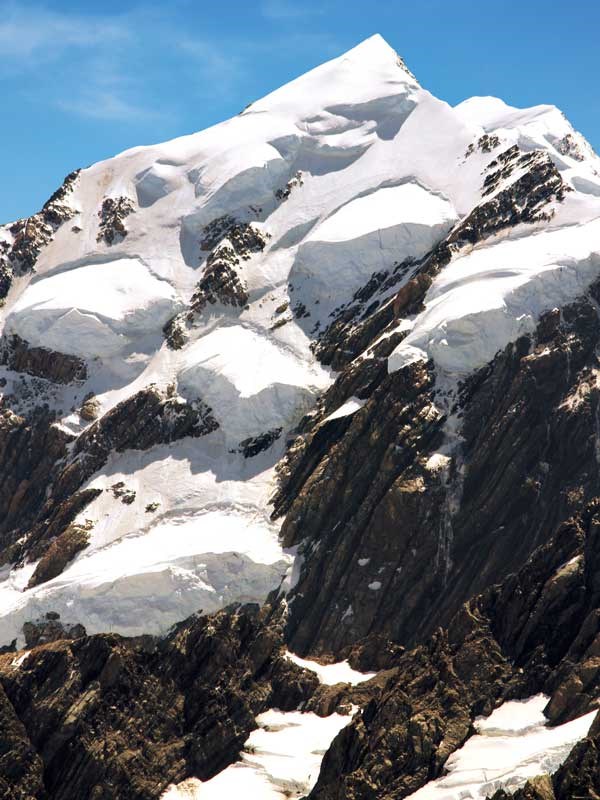 |
Stunning snow formations on the upper slopes of Aoraki |
Needless to say, the children were off down the path to the beach in five seconds flat. A perfect, safe and easy access spot was found, shoes were off and it was time to do some iceberg hopping.
They lasted a wee while, surprisingly, and had a ball. After we had had our share of fun, other families used the same icebergs for photo opportunities. Soon enough it was time to wander back to camp.
With the day heating up, we became aware of the odd‘boom’ in the distance and, looking up, could see avalanches falling off the huge ice shelf on Mt Sefton – yet another ‘wow’ moment.
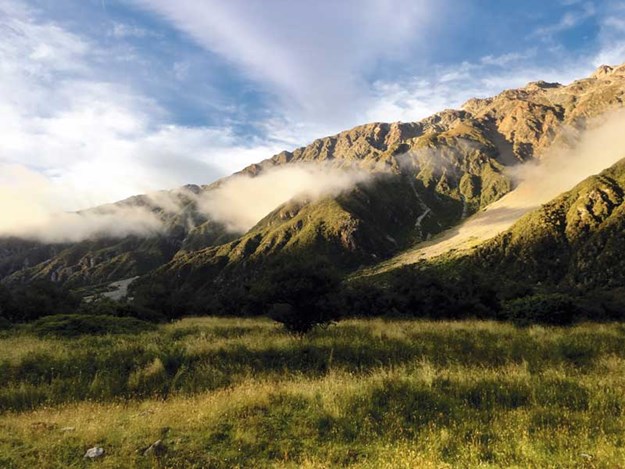 |
Evening cloud drifts around the ridges |
Exploring the village
After a late lunch and a bit of downtime, we felt we should make the most of the daylight left to us. Reluctant to move our car anywhere in case we lost our precious parking spot, we decided to walk the easy 2km track into Mt Cook Village.
There was a bit of moaning from the children, but a nice cold lemonade at the Old Mountaineers Café and Bar helped alleviate that.
The visitor centre was impressive, with a fantastic geometrical window framing a view of Aoraki Mt Cook. Huge and informative, it was easy to spend an hour or so there.
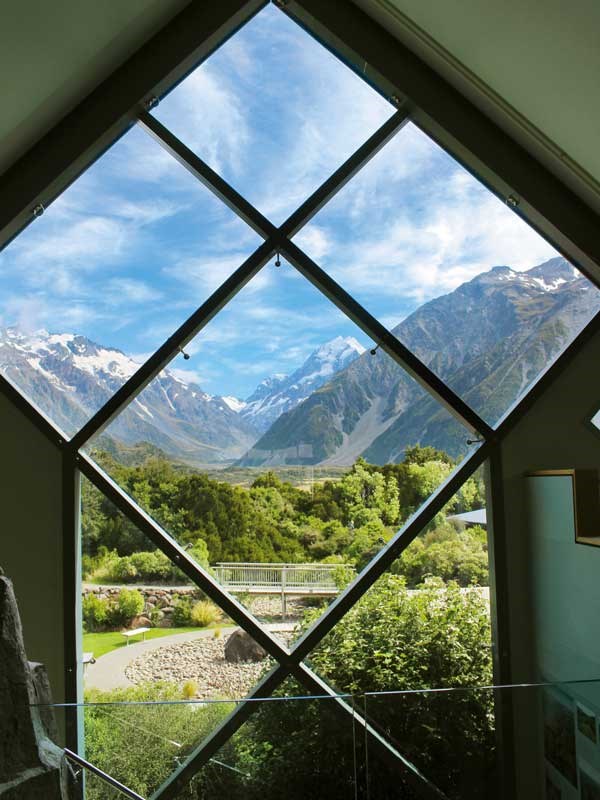 |
The visitor centre offers superb views... |
An early start next day saw us load up the car, but with tents to dry off we decided to head out and walk the short track to the viewpoint over Lake Tasman and the Tasman Glacier.
It took us only 15 minutes to climb the numerous steps from the carpark, and we shared the spectacular views with just a few fellow early risers.
A smattering of icebergs floated in the large grey lake below us, and we watched with interest as small inflatable boats made clear lines in the glassy still water as they ferried tourists from berg to berg.
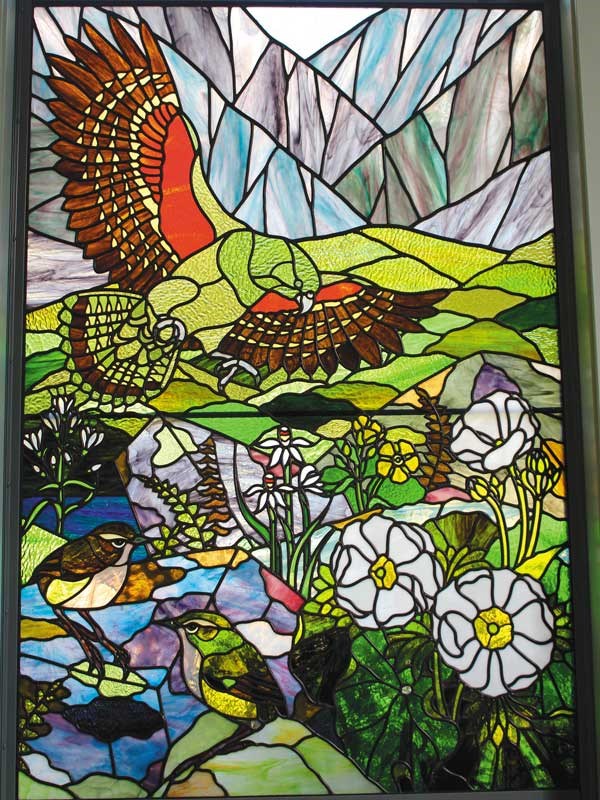 |
... and beautiful stained glass windows |
Helicopters also whirred overhead, this obviously being the valley they were permitted to fly in. We could have stayed surveying the scene for ages, but after 10 minutes or so it was time to head back, pack up the now-dry tent and carry on with our journey.
Aoraki Mt Cook had astounded me. New Zealand has so many beautiful places to visit, but the scale and beauty of these mountains, the geology of the glaciers and the dynamic nature of the icebergs and avalanches made this an experience I will never forget.
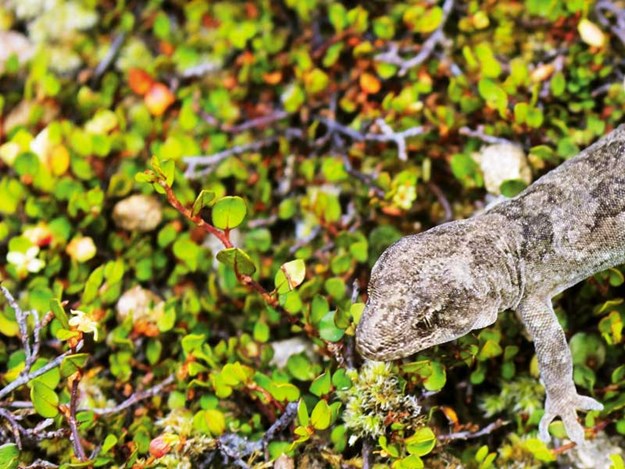 |
Native geckos at the campsite |





